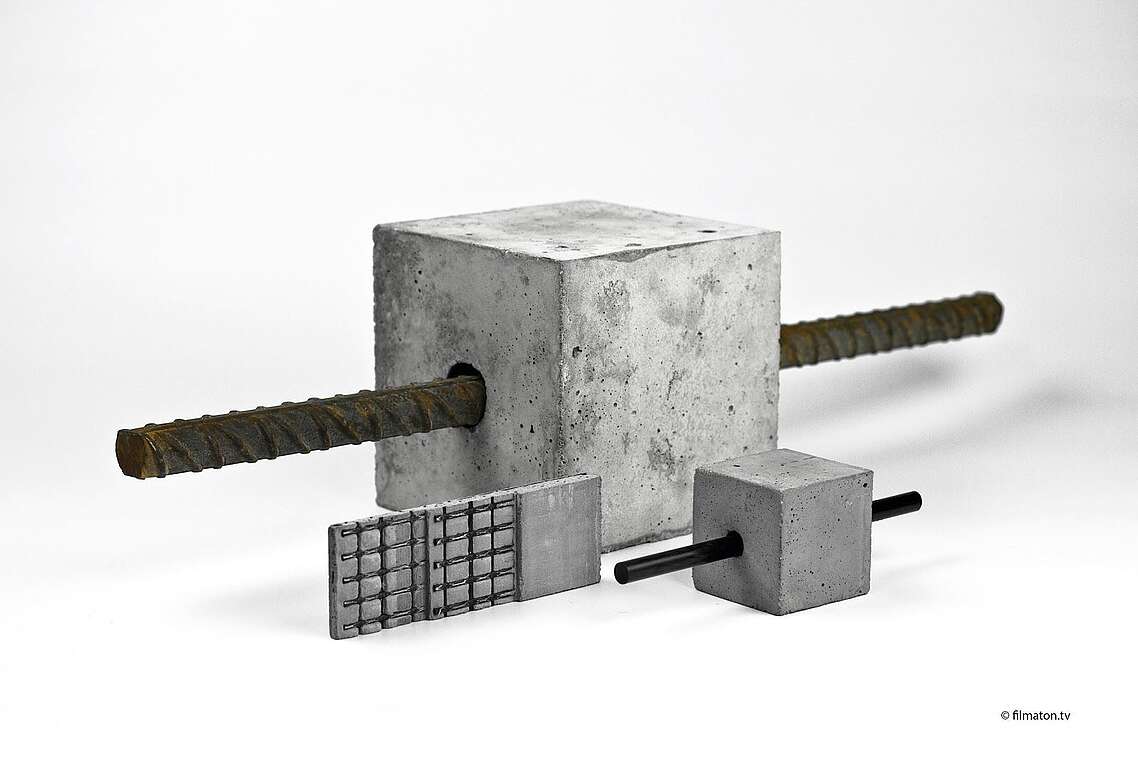Carbon concrete: it is a concrete that uses carbon meshes instead of iron elements, making it four times stronger and lighter than the usual reinforced concrete,
One building material has dominated the market for over 100 years: reinforced concrete. But a new composite material is making headway, which has greater strength, more durability and is lighter. The material is carbon concrete. Researchers believe that it will revolutionize architecture.
The building material is produced in different processes
Carbon concrete is a combination of concrete and carbon fibers. Three processes currently exist:
- Carbon fibers are mixed with the concrete. They spread wildly throughout the entire component.
- Mesh-like textile mats made of carbon fibers are placed between the fine concrete layers.
- With the nozzle process, which researchers developed at the University of Augsburg, the fibers are sprayed into the concrete in a targeted manner. This creates a building material with extreme tensile strength.
Carbon concrete combines many advantages

With carbon, the strength is five to six times stronger compared to reinforced concrete. The service life is also significantly longer. Bridges are a good example: Over 200,000 bridges exist in Germany. Many of them require urgent rehabilitation, because their average service life is only about 40-50 years. Bridges made from textile-reinforced concrete, such as in Albstadt, on the other hand can exist for about 80 years without major rehabilitation.
Costs are the biggest disadvantage of the future building material
One kilogram of reinforced concrete costs about EUR 1 in production, while one kilogram of carbon concrete costs about EUR 20. However these absolute figures do not reflect reality: Carbon concrete allows for a material savings of about 75 percent. This therefore also reduces the total price of a construction project. The costs balance out in connection with the longevity, strength and corrosion-resistance of the material. In addition, researchers in Augsburg and Dresden are working hard to develop processes to make the production of the composite material more economical
They are supported here by numerous partners from science and practical applications. The Textile-Reinforced Concrete Network was already created in 2008, which today is a member of the parent project C3 – Carbon Concrete Composite. More than 140 research institutions, construction companies and public institutions are involved in the project. The Federal Ministry of Education and Research finances the interdisciplinary work with a budget of EUR 45 million.
The first carbon building in Germany is being built in Dresden
It will already be on the campus of TU Dresden by 2019: the first carbon building in Germany. Construction costs of about EUR 5 million are expected for the two-story reference building. The experimental building will not only serve the purpose of further research on the building itself, but will also initiate a paradigm shift in architecture. For scientists, the focus is on the lightweight, delicate and aesthetically pleasing design, which is made possible by carbon concrete. New architectural forms could soon take shape thanks to the processes developed.
The best prospects for the coming years
The state, construction industry and science are behind the joint project of making carbon concrete the building material of the future over the next decade. They are working hard to develop a material that will sustainably change the construction industry in Germany, permanently reduce costs and protect valuable resources.
Source: allplan










